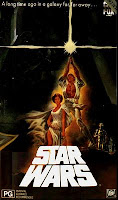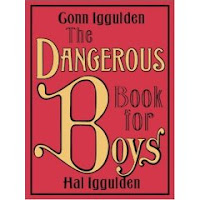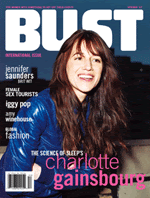
Coming off a long weekend, this one is for Mr M. And ok, waxing nostaglic on my part too, cuz I used to wear my hair in Princess Leia braids. Yep, I really did.

Since I use “Grrls Gone Wild” in my subtitle, I keep getting asked what I think about Girls (minus the rr, which has a whole ‘nother meaning) Gone Wild. Here tis: To my mind, slinking around a pole or writing about it is not the pinnacle of real-world empowerment, but nor are the women who do so and feel empowered being duped. I have no doubt that the women who flash their boobs for the camera on GGW feel powerful. In many ways, they epitomize the dilemma of our (Gen X *and* Y) generation: caught between the hope of a world that no longer degrades women and the reality of a culture that is still degrading. It’s confusing to be girl these days–or for that matter, a lady–in a world only half-transformed.
But for much more on the subject, check out this piece by Lisa Jervis on Girls Gone Wild as symptom of our culture’s stunted view of female sexuality. Jervis is responding to Garance Franke-Ruta’s proposal to curb young women’s participation in these televised boob-flashing-fests. With characteristic savvy, Jervis writes:
The trick is to help young women navigate and respond to the barrage without patronizing, faux-feminist posturing; reinforcing outdated virgin-whore ideas about what kinds of girls lift their tops; sighing over the outlandish behavior of kids today; or discounting or denying girls’ behavior as simple false consciousness—all of which is happening way too much, both in feminist circles and elsewhere. If we can’t widen our analytic lens enough to see this, then we’re going to be stuck in Joe Francis’s world forever.

I LOVE this. According to the findings of the “2007 Deloitte & Touche USA LLP Ethics & Workplace†survey, work-life balance influences positive ethical behaviors at work. Check it:
According to the survey, 91 percent of all employed adults agreed that workers are more likely to behave ethically at work when they have a good work-life balance. A combined 44 percent of workers cite high levels of stress (28 percent), long hours (25 percent) and inflexible schedule (13 percent) as the causes of conflict between their work responsibilities and personal priorities, hence contributors to work-life imbalance.
Sixty percent of employed adults surveyed think that job dissatisfaction is a leading reason why people make unethical decisions at work, and more than half of workers (55 percent) ranked a flexible work schedule among the top three factors leading to job satisfaction, second only to compensation (63 percent).
“When you think about it,†says Sharon L. Allen, Chairman of the Board at Deloitte & Touche USA, “if someone invests all of their time and energy into their jobs, it may have the unintended consequence of making them dependent on their jobs for everything – including their sense of personal worth. This makes it even harder to make a good choice when faced with an ethical dilemma if they believe it will impact their professional success.â€
Amen to that, Sharon Allen. And what a great new angle for pitching the work/life story. Better balance, better ethics, better karma – and not just better bottom line (though that’s a good one too.)
The survey was conducted by Harris Interactive and released on April 16.
There’s just too much bloggy goodness going on today around the blogosphere and elsewhere for this girl to take in. So here’s my quick round-up of cheers, props, and commentary:
Cheers to Marc over at Feminist Dad for spreading the TRUTH about the opting-out (non)phenomenon. And props to Marco for his beautiful post (yes, I’m biased) over at Hokum today, which is part of MotherTalk’s Dangerous Boy Friday – a blogging bonanza in which bloggers are posting in response to that #6-on-Amazon phenomenon, The Dangerous Book for Boys.
Academia still seems to be dangerous for grown up girls seeking tenure. Caryn McTighue Musil sounds off over at Ms. on the hurdles facing women in academe, including “The Baby Gap”(women with babies are 29 percent less likely than women without to enter a tenure-track position, and married women are 20 percent less likely than single women to do so), and The Today Show this morning actually had a nice little chirpy segment on how working mothers get screwed when returning to work, facing significant salary cuts over time. But finally, there are solid messages out there now about how companies can do better – check out Sylvia Hewlett’s new book, Off Ramps and On Ramps: Keeping Talented Women on the Road to Success, and Lisa Belkin’s piece yesterday in the New York Times on the “opting back in” revolution, where she reports on corporate programs designed to recruit seasoned women with names like The Opt-In Program, as well as the new businesses cropping up to service this population, like HR Opt-In, MomCorps, and Flextime Lawyers.
Moving from work/life to writing/life, since I’m obsessed by the reception of books on feminism (personal interest, yeah, as well as professional and political yadda yadda), I’ve been following the coverage of feministing.com founder Jessica Valenti’s Full Frontal Feminism with baited breath — and pretty much want to throw up. I’m sure I’ll be in for it too. Some publicists say, no such thing as bad publicity. Maybe, but my heart goes out to Jess who I hope KNOWS that she has written a fantabulous book (which is doing well, thank you very much, as far as Amazon rankings are concerned – and I urge you to buy it! buy it!). Anyway, Jill Filipovic over at Feministe has posted a passionate defense of both Jessica and her book, which has spawned over 100 comments. Here’s Jill:
Jessica wrote her book in a very particular way: She wrote it to make feminism accessible to women who might otherwise reject it. That is her purpose. Railing against capitalism and telling women that feminism is a movement which will not make your life any better doesn’t really seem to further that goal, does it? Neither does blathering on about how awesome high heels and pornography are. Jessica does neither….We need feminists like Jessica who do the very tough work of reaching out to women who are otherwise uninterested in feminism — feminists who are patient and generous, and who listen to the concerns and experiences of younger women without branding them stupid or not feminist enough.
What does Jessica get for doing that? She gets branded stupid and not feminist enough. She gets mocked by other feminists.
Amen, sister.
And to end this roundup on an up-note, if you happen to be in the Apple next week, be sure to check out:
A Reading with Girls Write Now
Thursday, May 24, 7pm
at 520 Eighth Avenue (b/w 36th & 37th sts.) on the 20th floor
Come out to hear girl writing mentors Pooja Makhijani, Maggie Pouncey, and Terry Selucky read their own fiction, nonfiction and poetry, plus special mentee emcees Phantasia Johnson, Lindsey Romain, and Briana Wilson.
GWN is a fantastic organization that nurtures and nourishes a future generation of women writers by hooking them up with mentors. The org is run by a group of women in their 20s and 30s who are unstoppable. If you can’t go to the reading, at least stop by their website and check them out. (Congrats GWN, on your new online home!)

Marco’s gorgeous review of The Dangerous Book for Boys is now up on his blog, Hokum. Here’s an excerpt from his review, to whet your appetite:
Its contents have a distinctly Anglophile charm: segueing from stickball and rugby rules to Morse code to cloud formations to marbling paper and cutting italic nibs (!!), Dangerous seems intended for some unlikely jock-geek hybrid, equal parts introvert and extrovert. In fact, what with chapters on polar exploration, navigation, historic battles and the Seven Wonders of the Ancient World, some might argue that the Igguldens have compiled a kind of throwback primer for young male WASP imperialist-adventurers educated in the classics; indeed a great part of the books’ appeal is its obstinately old-world presentation (the Seven Wonders are illustrated by what look like reproductions of Victorian postcards). The Age of Imperialism did coincide with the broader cultural impact of the Industrial Revolution, and so technology enabled not only global travel for the original tourist class, but also the wide dissemination of travel literature to a reading public, including the first generation of young armchair adventurers (boys and girls: remember lonely little Jane Eyre sitting cross-legged “like a Turk” on the window seat, browsing a natural history of the “bleak shores of Lapland, Siberia, Spitzbergen, Nova Zembla, Iceland, Greenland”). Some boys of that generation may have ended up becoming colonial administrators and big-game hunters, but other boys and girls of that generation became anthropologists and naturalists for the enlightenment of future generations.
(How much do I love him for referencing Jane Eyre?!)
Just a quick announcement that in time for Father’s Day, my partner, Marco, and my colleague and friend, author Paul Raeburn, will be appearing here soon with thoughts on boyhood and fatherhood respectively. Stay tuned!
But first, a big slurpy THANKS to all you who took the quiz below and sent me feedback (and especially to Marc, who saved me on that tenure bit, and to Dara, always). I truly appreciate it.
Ok, so my generational stripes are coming out, but can I just say how excited I am that Bust reviewed my book! I was hooked when they launched and became one of their early subscribers. It’s been fascinating–and fun–to watch them evolve.
So here’s what the Busties say in their next issue (June/July):
“Betty Friedan versus Gloria Steinem, radical feminists against cultural feminists, even Ms. contra Bust–[Sisterhood, Interrupted] is a history of battles within and between the second and third waves of feminism. Siegel surveys many instances of ‘feminist infighting’ over the last 30-odd years–wherein much energy has been spent debating how to achieve feminist goals as opposed to actively fomenting change–and explores the disconnect between older and younger feminists….The book’s singular focus on feuds presents an opportunity to revisit these happenings within the context of the movement–to see how the bickering often stalled forward progression and to learn from that.” – Bust Magazine
Ok, they said some other things too. But I swear, in light of that nice little piece by Henry Alford about mis-blurbing that appeared at the back of the New York Times Book Review the other week, I promise that what I’ve extracted here is verbatim and nondoctored. No really, I swear!
Think You Know About Feminism in 2007? Test Your IQ
1. Betty Friedan was:
A. A pin-up model from the 1940s
B. The mother of American cookbooks
C. A columnist for McCall’s
D. The founder of the National Organization for Women
E. Author of The Feminine Mystique
2. In 2007, for every dollar a man earns, a woman earns:
A. the same
B. 84 cents
C. 77 cents
D. 56 cents
3. During the Miss America Protest of 1968, radical feminists did all but which of the following:
A. Crowned a live sheep “Miss Americaâ€
B. Burned their bras
C. Threw aprons and high heels into a Freedom Trashcan
D. Sprayed Toni home permanent spray inside the convention hall
4. In 2007, women make up what percent of the U.S. Senate?
A. 3%
B. 16%
C. 33%
D. 50%
5. “Postfeminist†is:
A. A term coined in 1919 by a group of literary radicals in Greenwich Village who rejected the feminism of their mothers one year before women won the right to vote
B. A term used in the 1980s to describe an era in which feminism was deemed unhip and unnecessary
C. A media-hyped label that irritates third-wave feminists more than Adam Corolla
D. All of the above
6. The Real Hot 100 is:
A. A new reality tv show
B. A list of the hottest women according to Maxim magazine
C. A campaign to redefine hotness by refiguring the standards to honor guts and not just glam
D. Hot sauce
7. The Equal Rights Amendment was introduced in:
A. 1923
B. 1942
C. 1969
D. 1971
8. In 2007, what percent of tenured professors at PhD-granting universities are women?
A. 7%
B. 16%
C. 20%
D. 50%
9. Title IX is:
A. The name of Britney’s favorite club in NYC
B. A piece of pro-woman legislation passed in 1972 now under attack
C. The name of a secret feminist cult
D. The sister band of L7
10. In 2007, what percent of Fortune 500 CEOs are women?
A. 2.6%
B. 15%
C. 26%
D. 50%
11. BUST is:
A. A girlie magazine for men
B. A grrly magazine “for women with something to get off their chestâ€
C. A boxing move popularized by Laila Ali
D. A West Coast rapper
ANSWERS:
1 – C, D, and E, 2 – C, 3 – B, 4 – B, 5 – D, 6 – C, 7 – A, 8 – C, 9 – B, 10 – A, 11 – B
SCORE YOURSELF
11-8 = Superstar!
7-4 = Semi-superstar
3-0 = Hit the books, my friend. You got catching up to do.
Based on Sisterhood, Interrupted: From Radical Women to Grrls Gone Wild (available from Palgrave, June 12, 2007)
Last week a reporter called me to talk about why Hillary is such a polarizing figure, especially among women. And now, turns out, Katie Couric is too – or at least, among viewers male and female, according to a New York Times article today:
[A] recent Gallup poll reinforced the notion that Ms. Couric had become a polarizing figure: 29 percent of respondents said that they did not like her, as opposed to 51 percent who said that they liked her. (Her competitors at ABC and NBC both had negative scores under 20 percent and positives around 60.)
Not surprising of course that Couric has endured exceptional personal scrutiny:
She was criticized for wearing too much makeup or too little….She was criticized for being too soft in her initial newscasts, and too hard in an interview with the presidential candidate John Edwards and his wife, Elizabeth, after they revealed that Mrs. Edwards’s cancer had returned.
So here comes CBS president Sean McManus, weighing in:
“Maybe we underestimate the huge shift this represented,†Mr. McManus said. “It was almost a watershed event to have a woman in that chair.†He added, “There is a percentage of people out there that probably prefers not to get their news from a woman.â€
Watershed indeed. And maybe if there were MORE women delivering hard news across the networks and on the air, Katie wouldn’t have to represent everything to everyone. Kind of like Hillary, you might say.
PS. On a generational sidenote, Couric’s ratings, while still usually third after ABC and NBC, are most competitive among younger women. Guess we’re ready to get our news from a girl.
According to my lame but stalwart built-in thesaurus, OPT (v) means “to choose something or choose to do something, usually in preference to other available alternatives.” Pamela Stone’s Opting Out? Why Women Really Quite Careers and Head Home is the book I’ve been waiting for.
Instead of focusing reductively on women’s “choices” (who has choices when alternatives are limited?), Stone charts the institutional obstacles and cultural pressures that leave even the most advantaged women feeling pushed out. Stone writes as a sociologist, a scholar of women’s careers, and a mother. But here’s why I love this book: Instead of blaming women, imploring us to “get back to work” (a la Linda Hirschman) or warning us (Leslie Bennetts-style) that we’re all making a dastardly mistake, her message is one that, as a Gen Xer staring into the crosshairs of burgeoning career and potential motherhood, is far more palatable to hear.
Stone lets her subjects — mothers in their 30s and 40s who “time out” from professional careers — describe their trajectories in unstructured interviews, giving voice to a group we have heard much about but have not heard. She lambasts the media for sensationalizing our so-called mass exodus — which, in truth, is not so massive and reflects neither a sea-change in values among feminism’s daughters nor the modernization of the feminine mystique.
Opting Out? fills a void — virtually no real research has been done before on women leaving careers — and it’s the question mark in the title that propels the book. Stone looks at who these women are who leave and head home (whether permanently or temporarily), why they walk away from years of training and accomplishment to take on “full-time” motherhood, and what happens after they do. She looks at the implications of their leaving for the workplaces they leave behind, and the impact their decisions have on other women — female coworkers and, especially, younger women embarking on careers. Loaded with facts and real data, the introduction alone is worth the price of the book.
Stone found that the women she interviewed quit as a last resort, and for reasons of work, not family. She calls their decision is “a kind of silent strike” and describes their failed efforts to re-invent the workplace in their image: “These women had alternative visions of how to work and be a mother, yet their attempts to maintain their careers on terms other than full-time plus were penalized, not applauded; it was quitting that earned them kudos.” Stone emphasizes that these women’s stories are not over, that most are still in the process of re-invention — but leaves us wondering, how will the next chapter unfold?
Anyone acquainted with the research knows that younger women and girls aspire to professional achievement. It’s made headline news. As a recent New York Times story and books like Courtney Martin’s Perfect Girls, Starving Daughters make perfectly clear, Millennial strivers are ambitious to the point of extremes. Daughters of a half-finished revolution, this generation (as well as my own) lives suspended between the expectation of a world ready to open its arms to us and the reality of a world not yet fully transformed. Books like Stone’s have the potential to rally without blaming, and incite without fear. Let’s hope it finds its audience — working women present and future pondering their limited options and the workplaces that, drained of such women’s talent, should have no choice but to change and offer us alternatives to heading home.



